Into the Sahara
Dispatch XXXII
The Sahara is vast, empty, stunning; the land where T.E. Lawrence and Antoine Saint-Exupéry created legends. This journey would take us from Fes into, and beyond, the Atlas Mountains to the land of a thousand Kasbahs, to Merzouga and a rendezvous with the mysterious land that is home to the Bedouin and sunsets that take the breath away, where we would camp among the dunes with camels, musicians, and some unexpected luxury.
Through the Atlas Mountains into the Sahara
Day 250-June 3, 2022 – Through the Atlas Mountains to the Sahara
It’s June now and my hopes that we could successfully speed from South Hampton, England to Morocco by train, bus and ferry, zipping past a quatrain of nations in four days to span the Strait of Gibraltar and beat the heat, has failed. Temperatures in Fez were routinely hitting the 90ºs, and now after our sweaty sojourn through Volubilis, it was time this morning to head south toward the Sahara.
At least we could enjoy one more petite dejuener with Said at the Riad Anata before departure. We had gotten used to his gentle ministrations each morning as he served our breakfast on the riad’s roof. Afterwards we would make for Merzouga through a portion of the Atlas Mountains where we would then bend east toward Algeria. The trip would take a full day. But for now we helped ourselves to Samira’s meals of jam and eggs, muffins, olives, yoghurt, crepes, juice, coffee and hot chocolate.
Before we said goodbye we met two remarkable travelers: Michel and Silke, both from Vevey, Switzerland. They were sitting nearby enjoying their own breakfast before their van — the one they had brought from Europe over the Straits to explore Morocco — headed north back toward Tangier. This couple, we quickly realized, were serious travelers, an early indication of the many people we would meet on our journey whose wanderings made us look like pikers. Previous versions of Michel and Silke’s vans had taken them over the Atlantic by cargo ship to travel throughout South America. On another journey, they departed Switzerland for New Zealand to buy a yacht and sail it across Polynesia to New Caledonia — just the two of them. Twice storms almost killed them.
When we found them, they had been traveling Morocco for months, hiking, camping, meeting local Berbers to get a true view of the country and its culture. This was generally their chosen way of getting around. They were delightful and we immediately connected. Later we’d meet them again when we passed through Vevey, Switzerland. (On day 576 and also on day 578 for more on those later meetings, and see the couple’s website here. Note, it’s written in French.)
With breakfast behind us, we grabbed our bags, and said our sad goodbyes. At the edge of the Medina stood a slim, dark-haired young man by a black Toyota Land Cruiser. This was Ismail, our driver and guide for the next few days, a man of immense energy and enthusiasm, possibly because, as we would see, he almost constantly sipped a full bottle of sweet, mint tea.
He would take us to Merzouga and the Sahara Desert (a redundancy since the Arabic word for desert is sahara) south through the low Atlas mountains. Once in our car, we passed quickly through the clean, empty boulevards of the newest sections of Fez versus the ancient Medina where we had been spending our time. You won't see any mules walking the streets here, though you will find your share of teens in clusters, talking excitedly as they walk to high school (called university here), with their brand new backpacks slung on one shoulder.
On we passed through the rising heat beyond countryside spread with acres of olive trees toward the mountains along a broad, paved highway. I watched a single old man with his worn caftan, long, gray beard and hood, staff in hand, standing like a statue as we roared by. He looked as if he had been dropped from another time.
Outside of Fez, we first rolled though rocky landscape that reminded me of Baja and our 1000 mile journey down that long peninsula. But soon as we rose into the hills and found ourselves surrounded by pine, apple, apricot, almond and cherry trees, those views disappeared.
Lions and Monkeys
The land Cruiser was taking us into the steep Moyen Atlas mountain range. Ismail pointed out every sight in his excited Arabic accent. At nearly 9000 feet elevation we arrived in the town of Ifrane, an Alpine Village directly out of Switzerland but somehow located in the mountains of Africa. Every building we saw was made of timber and masonry with steeped terra cotta roofs designed to handle the winter’s heavy snows. Nowhere else had we seen such buildings in Morocco. The town is placid, surrounded by small lakes fed by babbling creeks and stands of Mediterranean oak and cedar. Near the Hôtel Chamonix, Ismail walked us to a remarkable sculpture of a lion carved out of an large stone.
“A local man,” said Ismail, “carved this lion. His name was Absolom.” He had found and raised a lion cub in the Atlas Mountains and this was his way of memorializing it. That’s one story. Another is that it was carved by a German soldier during WWII, when Ifrane was used briefly as a prisoner-of-war camp when France controlled Morocco and Germany controlled France. Supposedly he exchanged the carved lion for his freedom. Or it may commemorate the last wild lion that wandered the Atlas Mountains, shot near the village in the early 1920s. Whatever the case, the stories are good ones so we posed, at Ismail’s insistence, before the beautiful creature, thanked whoever had given the world this gift and moved on.
We had hardly driven a mile when we passed a troop of Barbary macaque monkeys running amok in Morocco’s Ifrane National Park, the country’s largest forest. Ismail immediately stopped the car and hopped out, pulling us with him. The troop seemed to be everywhere and perfectly friendly. Ismail passed along handfuls of peanuts and the monkeys helped themselves as if they were a couple of country cousins. One day, when Ismail had stopped with the monkeys, he said one of them broke the passenger side window of his Land Cruiser.
“I say hello to take some pictures,” Ismail said, “and I give him some food, and then he breaks my mirror! I say you are not nice! I don’t like you anymore!” Ismail feigned anger and then grinned, and tossed the last of the nuts to the troop before we headed off and down the other side of the mountain.
Zaida
By the time we entered the town of Zaida, population 4968, we were looking for lunch. Since Ismail said the town was famous for its BBQ, Zaida seemed like the right place to stop. The town was all dust with squat one or two story buildings made of brown dried wood that ran along the powdery streets. Except for the cars and bicycles, Zaida reminded me of scenes from the old American West; movies like Tombstone or Carson City or Deadwood. I half expected a gunslinger to round the corner.
Ismail knew just the place for lunch, and soon we were walking up its wooden steps to a clapboard restaurant with big open and glassless windows. In no time plates of fresh BBQ beef with rice, salad, tea and cold water appeared. Really delicious.
You could feel the heat again now that we had descended a few thousand feet. We chomped while Ismail explained that each city in Morocco has a color. Marrakech is yellow. Casablanca is red, Chefchouan and Fez, blue. Others are rose or pink or white. Though there seems to be no clear explanation for the origin of these colors, each stands for an idea. Ochre represents the Sahara’s sandy dunes, green is the color of Islam, blue inspires reflection and introspection, black represents the land’s dark-skinned people and white is the color of purity.
While we rolled these ideas around, tearing into the BBQ, Ismail outlined the next part of the journey. We would head next through the Middle Atlas mountains, past the land of a thousand Casbahs and finally into the Sahara. I was eager to see this magnificent desert after all of the hair raising travel stories I had read, and the movies and TV shows I had watched as a kid about the French Foreign Legion and the exploits of Lawrence of Arabia. At last I’d see this unearthly (at least to me) place where it was you or the sand and the heat. How, I wondered, had members of the human race survived, even flourished, in a place like this for so many millennia?
We bid our proprietors good-bye, grabbed some big bottled waters at the bodega across the street and hopped into the Land Cruiser.
We were now in Morocco’s high desert. Ahead I could see the Middle Atlas Mountains and their black, battered peaks. On the way out of town, I watched Ismail toss a bottled water to a begging man sitting by the road. Just a simple kindness. The man snatched the bottle from the air and nodded to Ismail as he twisted it open and drank. Ismail said nothing. Simply kept driving and never missed a beat.
The Land of 1000 Kasbahs - Ancient Forts and Basic 21st Century Housing (Photos - Chip Walter)
The Land Cruiser snaked us through the high flatlands. We were at 6000 feet elevation, passing through a series of small and mid-sized towns. Fresh infrastructure was being built everywhere. Morocco seemed to be growing like a weed; moving into the 21st-century as quickly as its current King Mohammed VI would allow, even as some lived in shacks and lean-tos.
The king has changed more than the infrastructure of the country. While polygamy is legal (for men), it was all but outlawed by the current king in 2004 with laws that make it it economically prohibitive for a man to marry more than once. Nevertheless, the country remains a work in progress. The particular roads we travelled were so pocked and bumpy, I couldn’t make sense of the notes I was scribbling as we bounced in the back of the Land Cruiser.
1000 Kasbahs
After a while all of the cranes erecting new buildings disappeared. We had entered, Ismail explained, the Road of a 1000 Kasbahs (forts). The land was rugged and red. Immense buildings of adobe, peaked with spires and turrets, battered by time and weather sat among the rock against the massive backdrop of the Atlas Mountains. Clustered the way they were, I imagined they looked something like Bethlehem might have when the Christ child was born. In fact this area was settled mostly by Jews in the 5th century BC, but not before the original inhabitants from the south made their way from the interior of Africa and then were subjugated by the Amazigh or Berbers. The region bustled 2500 years ago with a hodgepodge of immigrants. There was good reason. These river valleys run like great stripes of green surrounded by scrub, rock and desert so barren all of it would shame a Navajo living in Utah or Arizona. But 2500 years ago, the region was more lush. These green valleys now are only an echo of what once was.
The Sahara
It was late afternoon by the time we made it to Et-Taous near Merzouga and Erg Chebbi. We were at the lip of the Sahara now, a mere 30 miles from the Algerian border. The plan was to camp among the dunes and take camels deep enough into the dessert to enjoy a Saharan sunset. Temperatures had now topped 100º F as we passed through Rissani and watched a caravan of camels loping along. In another time they might have been merchants heading with their goods south into Timbuktu (now in Mali), but today their location was a mystery.
This is a tourist area for people looking for exactly the experience we were planning, but it wasn’t always this way. In between glacial maximums, the Sahara was often lush with palm trees, lakes, rivers and wildlife. There are ancient drawings in the Sahara of forests and savanna, lions and giraffes. Morocco’s largest underground body of water supposedly exists beneath the dry beds of Merzouga. Legend has it that the village was once a tropical jungle but God turned it into a desert for refusing to provide a poor woman with food and drink.
In the early 20th century, the French Foreign Legion set up fortresses to keep the Berbers at bay. We saw nothing of fortresses as Ismail took us bouncing through the dust into mountains of sand and our desert camp.
Camp might give you the impression that our living quarters were rough. They weren’t, and far more accommodating than we expected.
Our tent was not an inch bigger than Montana, complete with King-sized bed, full baths, toilets, closets, electric lights, lounge chairs AND air conditioning! This was the height of glamping, and had we known it, we would have stayed several nights, not the one that had been suggested. “It will be too hot to stay longer than a day,” we were told.
Our humble Bedouin abode in the Sahara. (Photos - Chip Walter)
We unpacked our bags, but there little time for lounging. The sun was setting and we could see and hear the camels, snorting outside, eager no doubt to have a couple of tourists hop on their humped backs and take us west. Soon we were in our saddles loping along with the help of two guides who would take us into the desert’s high dunes for a once-in-a-lfe-time trip into a Saharan sunset.
Rocking on a camel feels good. You kind of roll with the animal’s lollop and it all gives you a sense of lordliness, the feeling that you, not the strange, knock-kneed creature beneath you is under control. Of course this is completely wrong, nevertheless the flat-out grandness of everything around us made me feel kingly. I seemed to be involuntarily absorbing the colors of the setting sun and shifting sands — tans, browns, reds and golds against the bight blue sky that encompassed us. Ismail had given both Cyndy and me a pair of kufiyya, or head scarves, before our arrival, so neither the heat nor wind bothered us. Maybe this too made me feel Sultan-like, or for a moment, just a little like a T.E. Lawrence, a lily white man somehow embedded within this forbidding part of the world for a glorious moment.
Cyndy, “Bedouin” by painter John Singer Seargant; Chip and T.E. Lawrence on his camel.
(Photos thanks to Merzouga Luxury Desert Camp)
In time we slid off our camels and hiked up steep dunes to see the sun sinking into the sand-rimmed horizon. We lay on great beds of the granulated rock, mesmerized, trying somehow to capture and hold the moment when, for one day, we could watch this magnificent golden ball disappear like a molten mountain into the darkening sands.
Afterwards it was time to return to our meager camp where a fire was set, and food prepared, so we could sit in luxury with the Sahara at our feet, a land so vast that it extended clear from us to the pyramids of Egypt, thousands of miles away. I wondered about the man from another time we had passed, and the beggar Ismail had given water, and the old carved lion and the broken pillars of Volubilis and marveled at what a world we live in. How complex, how rich, how unfair, how spectacular and horrible, and tried to make sense of it. I couldn’t. Instead, Cyn and I both sat before the sands, beyond relaxed, beyond amazed and humbled until finally a small group of local musicians sat to serenade us with their music. Eventually, it was time to retire into our palatial bed to imagine tales of sultans and bedouins and flying carpets, and finally sleep.
In the morning, we awoke and for a moment I wondered again, where the hell was I? And then I walked out to see it was nothing more the mightiest desert in all the world, drenched in sun, its unnumbered, ancient sands slowly drifting this way and that, almost saying, “We will be here, long after after you have fled this world.” I smiled. Humbled again. And then we drank coffee and ate fresh fruit, eggs and pita until Ismail appeared like a genie to lead us through the serpentine highways of the High Atlas Mountains and into Marrakech.
This is Dispatch XXXII in a series about a Vagabond’s Adventures - journalist and National Geographic Explorer Chip Walter and his wife Cyndy’s effort to capture their experience exploring all seven continents, all seven seas and 100+ countries, never traveling by jet.
If you’ve enjoyed this adventure, please take a look at Chip’s other adventures (and misadventures) … and don’t forget to check the Vagabond Journal and our Travel Recommendations to help you plan YOUR next adventure.
Sign up here to get our newsletters delivered to your email along with news and special offers in the Vagabond Adventure Store.
| Miles Travelled | 21,000 |
| Ferries | 8 |
| Transatlantic Ships | 1 |
| Trains | 12 |
| World Heritage Sites | 12 |
| States | 30 |
| National Parks and Monuments | 17 |
| Beds | 96 |
| Keys | Way more than four octaves |
Morocco Recommendations
If you’re heading to Morocco or you’re shopping for ideas for your next excursion, we wanted to share our recommendations. Feel free to leave your own suggestions too in the comments below! We want the thousands of other vagabonds who have joined us to know about the places you’ve explored and about your own experiences in Morocco (or anywhere in the world, for that matter). Here are a few suggestions. Visit our Recommendations page to get ideas and suggestions from around the world!






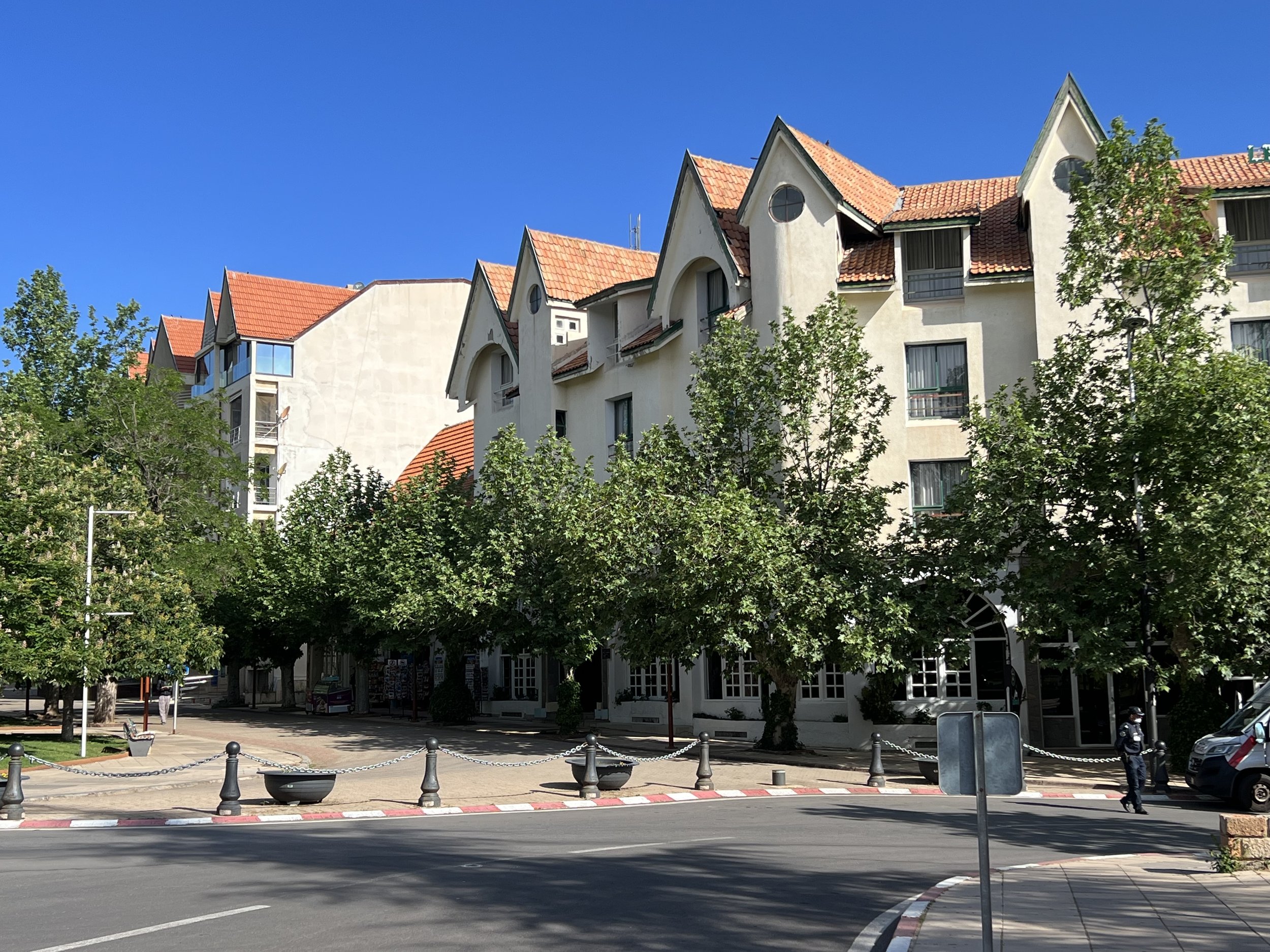






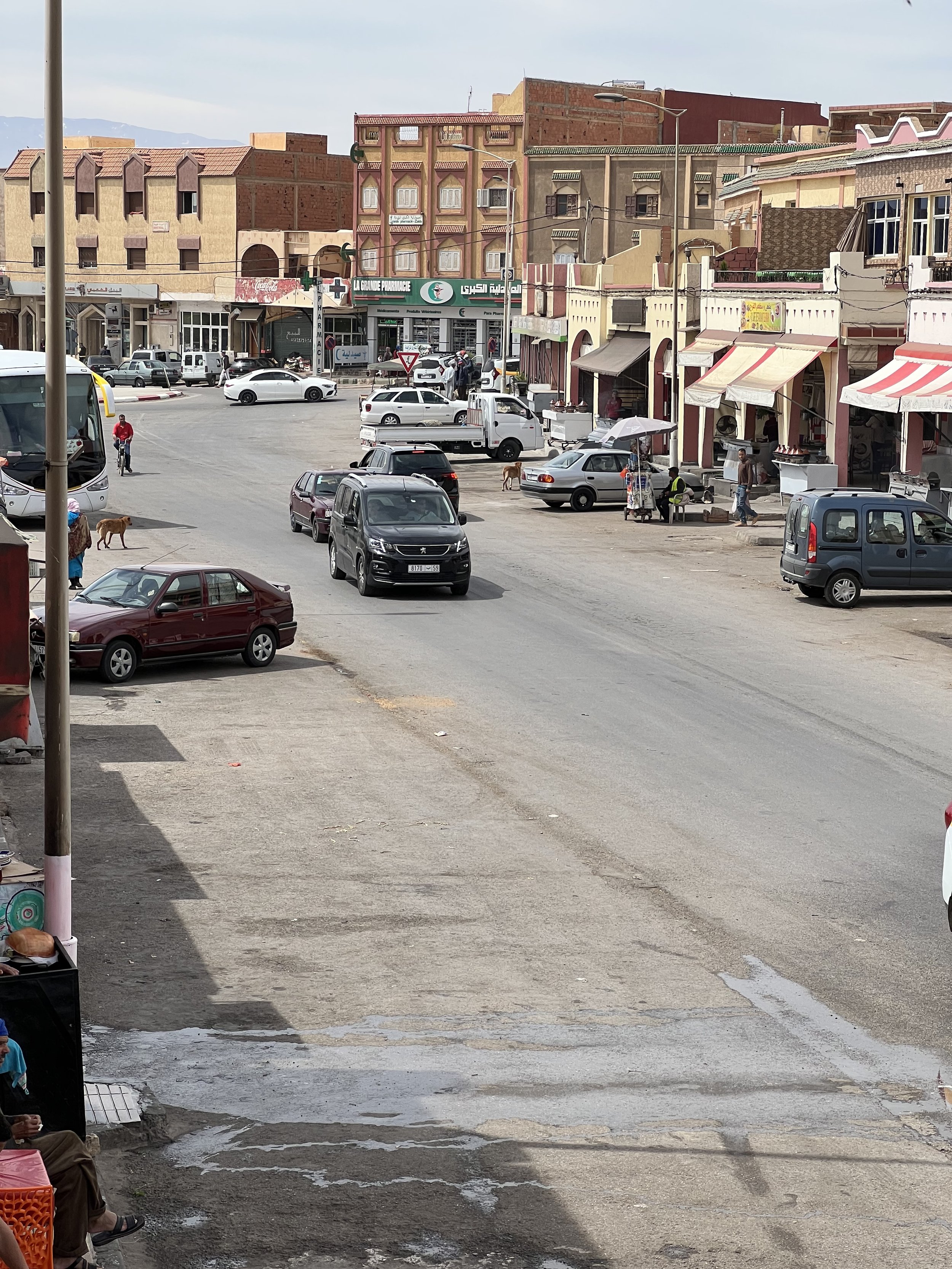



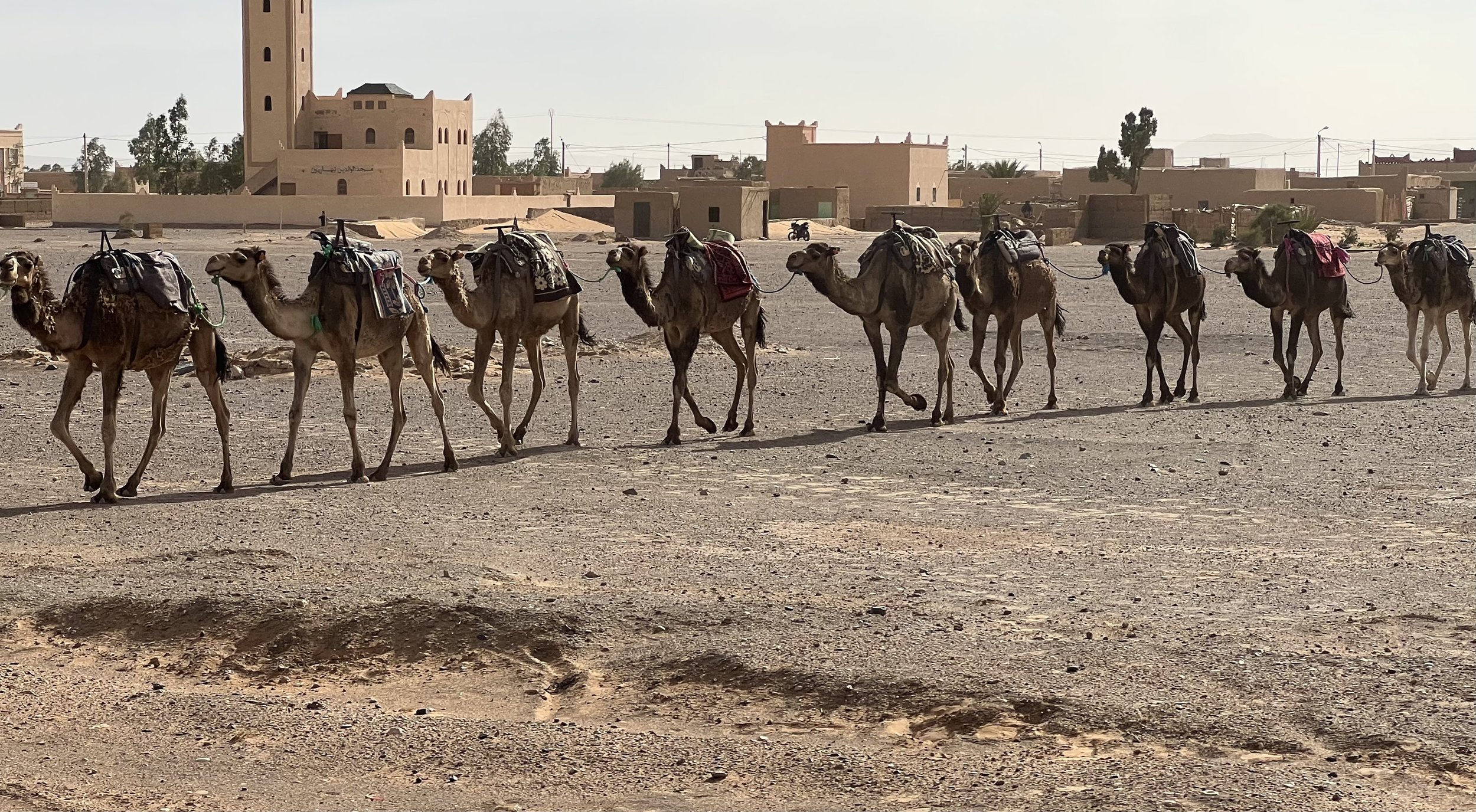





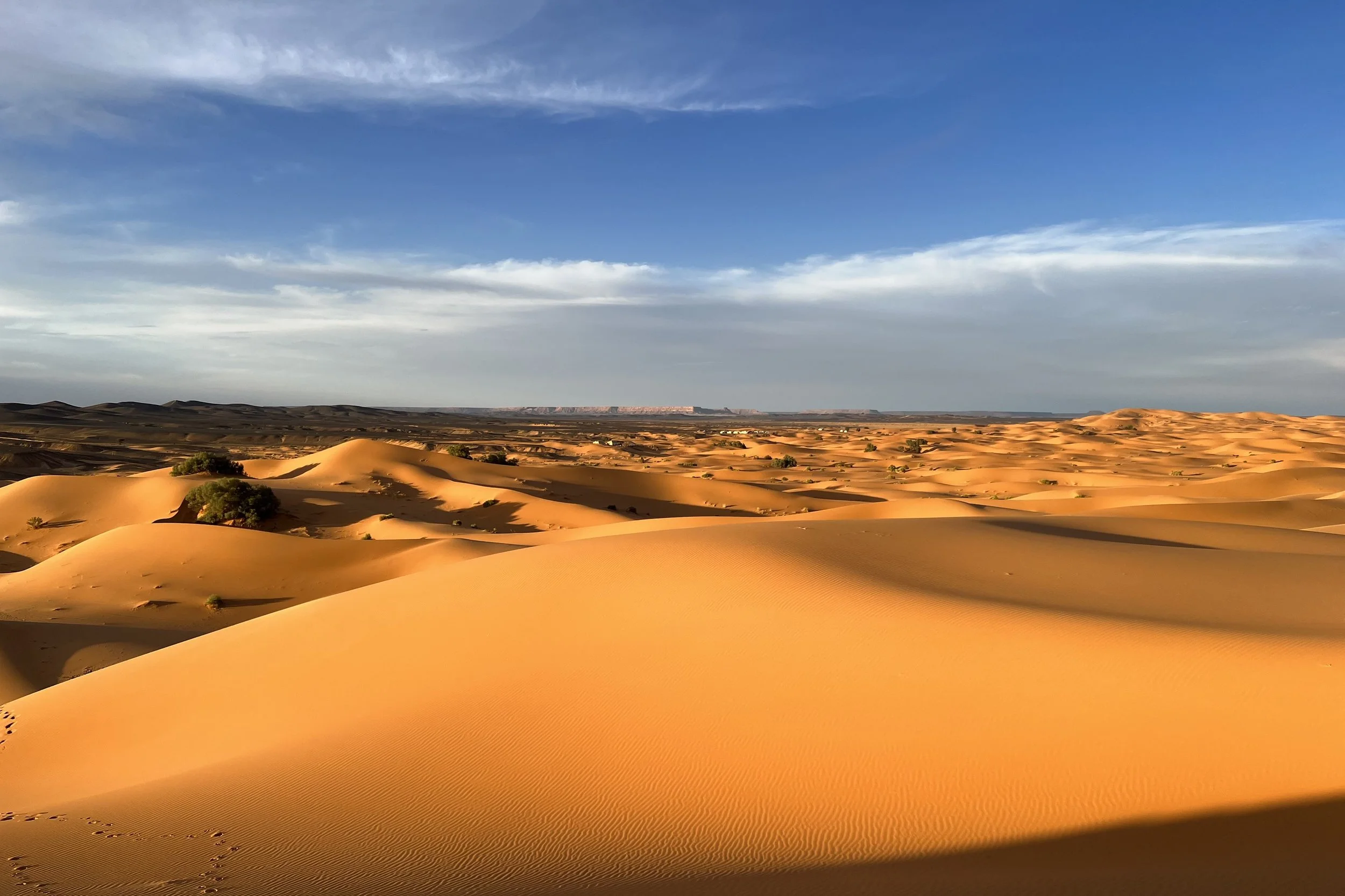









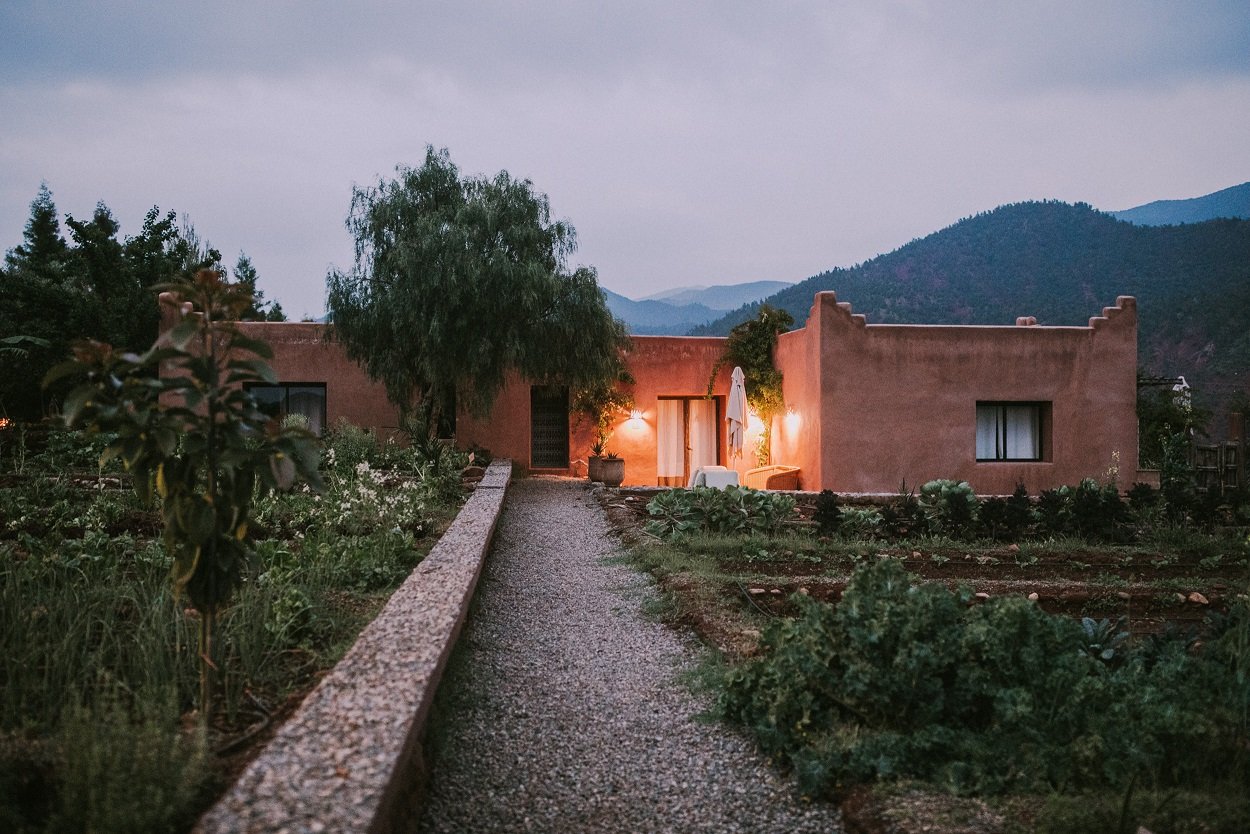

“Expertly planned Morocco journeys for culturally curious travelers.
Cobblestone’s founder, Michael Diamond, has been named to Travel + Leisure's A-List on Morocco Travel for the last 7 years. Conde Nast Traveler named him as their 2016 Top Travel Specialist for Morocco.
With nearly two decades of experience designing private travel to Morocco, we want to share our excitement and passion for this unique destination with you. We want to enchant, challenge, and inspire curious travelers. Let us design a customized itinerary that reflects your interests but also, hopefully, surprises you with unforgettable experiences that only we can arrange.”